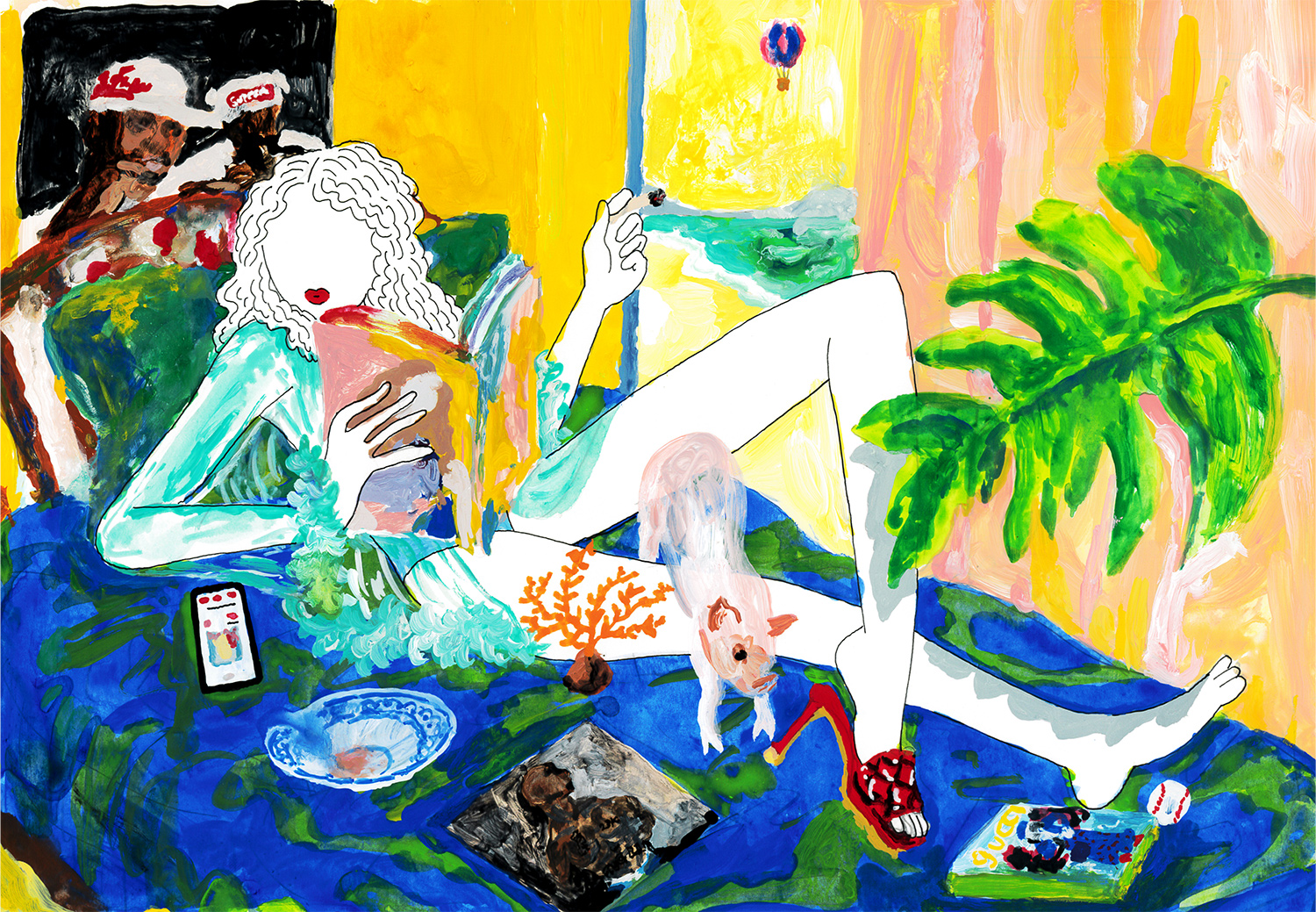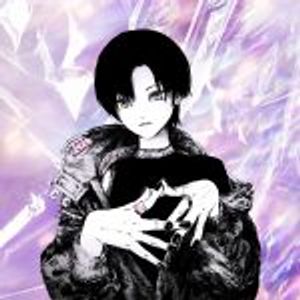When we look at the relationship between music and fashion, as well as between fashion trends and youth culture, we get a clearer understanding of the times we live in. In this series, Tsuya-chan, the writer behind the article, “2010s Analysis: A Look at Trap Music, Fashion Trends, and More,” analyzes current cultural events by examining contemporary music with a focus on Japanese hip hop.
Following her previous installments about Gucci and Versace, she shifts the focus of this fifth installment to Chanel. Tsuya-chan discusses the essence of Chanel’s creations, as well as the artists who reference the brand in response to/sympathy with these values.
The intersection of Frank Ocean and Chanel, a brand that stays true to its identity while it continues to innovate.
The March 2017 Chanel 2017-18 AW collection in Paris was the most impactful and shocking show I’d seen in recent years. Not because it sent out any kind of noble message, but simply because it was an amazing collection that captured Karl Lagerfeld in all his glory——expressing a vulgar metaphor on a huge set and throwing his full weight behind executing something cliched.
The costumes and accessories were created in a futuristic universe inspired by outer space, with a giant rocket placed in the center of the runway. At first glance, it was a Chanel show as usual: elegant, incredibly entertaining, and large in scale. But upon further inspection, the shiny costumes were glittering with silver and the models’ hairstyles were voluminous at the top, reminiscent of a heavy metal band. The show concluded with the models forming a circle around a giant rocket, which produced white smoke as it appeared to blast off to the tune of Elton John’s “Rocket Man.” It was a production with phallic and sexual themes——a bold performance that made it difficult to distinguish how much of it was a joke or irony, so all you could do was laugh.
Chanel’s shows, engineered by Karl Lagerfeld for many years, contain numerous metaphors (sometimes so vulgar you have to laugh, and sometimes so cliched it’s almost refreshing), sparking the fantastical imaginations of the viewers. That may have been the best approach the fashion house could have taken to keep up with the latest trends while preserving the variety of ”regulations” at its core: Coco Chanel’s signature elements of tweed, lace, jersey fabric, and a black color palette.
It’s common knowledge that Chanel is a brand for women. As a prominent figure who represents the popular culture of the 20th century, Coco Chanel’s way of life itself has been given great importance. The fact that many popular songs reference Chanel in a similar way is proof of Chanel’s position as an entity that motivates femininity. The lyrics to Seiko Oomori’s “Zettai Kanojo” further emphasize this point: “Chanel lipstick for special occasions/Someday I’d like to put it on for you/Definitely hope it’s a girl/Definitely a girl.”
In recent years, Chanel has focused efforts on marketing to men in the area of sneakers and makeup. Pharrell Williams appointment as a brand ambassador is still fresh in my memory. Many rappers including JP THE WAVY actively incorporate Chanel into their style, but the most impactful was when Frank Ocean announced a song titled “Chanel.” Oddly, this was a few days after Chanel’s 2017-18 AW collection.
Chanel has been expanding its fanbase to men while staying true to its identity as a women’s brand. It has also produced shows full of metaphors. If you listen to Frank Ocean’s lyrics while considering those two things, it’s possible to dig one layer deeper into the lyrics.
「My guy pretty like a girl/And he got fight stories to tell/I see both sides like Chanel」
Frank Ocean is talking about his bisexuality and how his boyfriend’s persona floats from feminine to masculine. He uses a simile to say that this is “like Chanel.” That framework itself relies on the aforementioned characteristics of Chanel, but Frank Ocean is obviously pointing out Chanel’s logo, too. The image that comes to mind, the symbolic symmetrical logo, instantly heightens the three-dimensionality of the lyrics. Actually, in Japan, the well-known artist BAD HOP pulled off a similar feat. In “Asian Doll,” BAD HOP sings, “Asian doll you give me trouble/It’s all your fault/You want Chanel and Louboutin/Balenciaga and Prada/No matter how much I make it’s never enough/It’s all your fault.” Chanel is the first thing he suggests as a gift for the woman he loves. In the next verse, he continues, “At night we play in bed/Just like a Chanel logo,” comparing himself and his girlfriend to the Chanel “C.” This technique (whether intentional or not) forms a clearer picture of lyrics by making the listener imagine the intertwined logo, perhaps precisely capturing the essence of Chanel.
How Elle Teresa celebrates women and Coco Chanel-like comfort in her music
Chanel is a brand that also seeks physical comfort. Once, Coco Chanel said, “Fashion has become a joke. The designers have forgotten that there are women inside the dresses. Most women dress for men and want to be admired. But they must also be able to move, to get into a car without bursting in their seams!” (Bronwyn Cosgrave, “Vogue on Coco Chanel.” Gaia Books 2013.) She harshly criticized what had been the norm up until then, decorative and luxurious costumes that bound bodies with corsets. Her functional style, which marked the beginning of the new Art Deco era, was designed for the everyday lives of busy women, leaving the male-centric aesthetic in the past. This led the way for about 20 years until the introduction of Dior’s “New Look” in 1947.
Chanel’s convictions still live on today. In 2017, one female rapper reinterpreted them through rap, an art form with some distance from fashion. In the song “Makeup,” the rapper Elle Teresa calls for the celebration of women, “Like sailor moon/A strong girl/Makeup,” “Male-dominated hip hop/I don’t get it/I’m the star/I can’t play a small role/Transform like a sailor guardian.” Of course, while this song contains Chanel’s long-held identity as a women’s brand, it also conveys Coco Chanel’s belief in physical comfort in an almost forced way.
In a verse that lists makeup brands, Elle Teresa rhymes, “Chanel Coco/Shu Uemura/PAUL&JOE/Saint Laurent.” Here, Elle Teresa deliberately flips Coco Chanel to “Chanel Coco” to sound smoother with “Shu Uemura.” The order becomes “Chanel Coco/Shu Uemura,” but the lyrics prioritize the Coco Chanel-like pleasure of seeking physical comfort, which is absolutely right for both Chanel and rap music.
As a brand, Chanel has expressed their celebration of women, metaphors, and physical comfort. In the next installment, I’d like to analyze more examples of modern music that fully utilizes these Chanel characteristics. Although I did not discuss it this time, I’ll also be referring to Chanel’s strategy——their stance towards counterfeit goods——through which I will assert the “correctness” of this music.
Illustration AUTO MOAI
Translation Aya Apton


